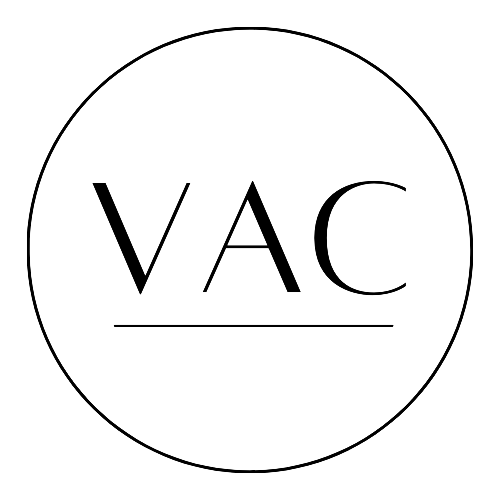Katrina Jurjans: Female Driven Dreamscapes
Artist Katrina Jurjans creates a bridge between reality and fantasy in her dreamlike paintings of women cloaked in patterns and textiles that sprawl across the canvas. Often revealing an underlying narrative, Katrina draws upon memories, hallucinations, and magical realism when working on her whimsical, female driven paintings.
Tell me about your background and where your creative journey began.
The overall context of my creative journey began when I was a child. I used to draw all of the time. Lots of animals. I have vivid memories of long drives with my dad and sister, where my sister and I would be sitting in the back of the car with two clipboards drawing, complete with all of these characters. We could spend hours and hours drawing and talking in these crazy voices, and develop these elaborate imaginary worlds together. I was also a pretty shy kid, and lived inside my head a lot. So drawing and creating narratives was a way to bring stories out into the world. My current work is still very narrative focused.
Where do you find inspiration for your work?
I am heavily inspired by magic realism. In my paintings I create narratives that are anchored to this world while simultaneously departing into the world of memories, dreams and hallucinations. As a backdrop of floral wallpaper becomes the textile patterns of a woman’s blouse and flower petals rain from the sky, I aim to present a world that is constantly shifting into a dreamscape and feeling. I am also very inspired by textiles and patterns, and usually begin my paintings by creating an elaborate pattern background that I layer upon.
How has your work shifted and evolved over time?
The evolution of my work happens gradually over time and is never something that I notice in the moment. It’s more when I look back on work from a few years ago that I can clearly see the growth. I also think as you develop a body of work you can often fall into the trap of having a prescriptive approach, so when I feel I am starting to follow a predictable formula I consciously try and change things up.
What does a typical day in the studio look like for you, and how has your art practice grown or changed?
A typical day in the studio is going in, having another coffee, and listening to the news for a couple hours (I have a few news sources that I am pretty addicted to) and working and taking small breaks throughout the day. Listening to music. Unless I’m trying to hit a deadline, by the time it’s evening I am done. I have also learned over the years I work in cycles, so will have bursts of intense work, and then need to take a break – go camping, or plan a little trip or something. During my time off I try to fully detach from my work. It took a while for me to realize I work best in this way, and to not feel guilty for taking breaks. When you’re a full time artist, your timeline and schedule is up to you, so you need to figure out what works best independent of more traditional working expectations. For me that was a mental process of letting go of ingrained, everyday schedules that just don’t work for me.
Which experiences have impacted your work as an artist?
Hmm there are too many to count. The first time I showed the beginnings of this body of work was at an outdoor art fair. I was so nervous because it was the first time that I had shown work that I felt proud of, and that wasn’t being influenced by external forces but was fully my own. And when I received positive feedback and actually sold a couple of pieces, I was on cloud nine and thought, okay, maybe I can do this. It took me a long time to have that trust and courage in myself. It is so easy to internalize all of the voices that downgrade art into something that needs to remain a hobby, or tell you that you need a backup plan etc., so letting go and outright dismissing that notion was a long process for me.
How has Instagram impacted your art career?
The beginning of putting my work on Instagram felt a lot more exciting, and now it just feels a part of my process of dissemination. I have talked to so many artist who are struggling with the algorithms and huge dips in interaction, which was a difficult adjustment. But now I don’t think about it much. I am not that active on it anymore, so whatever connections come out of it are great, but I don’t really have any expectations. I am in a very fortunate position where I have a waiting list for work, so at least for the time being I feel free from the financial uncertainty that I had for years.
What are your future goals and aspirations?
I have started to work on a few installations and I have been loving it! I want to bring the same sort of surreal narratives and colours into a physical space, and that transition has been challenging and exciting. I will always continue to paint, but am thinking more about my practice as larger reaching as opposed to being limited to a specific discipline.
Follow Katrina on IG: @katrinajurjans
Website: www.katrinajurjans.com







